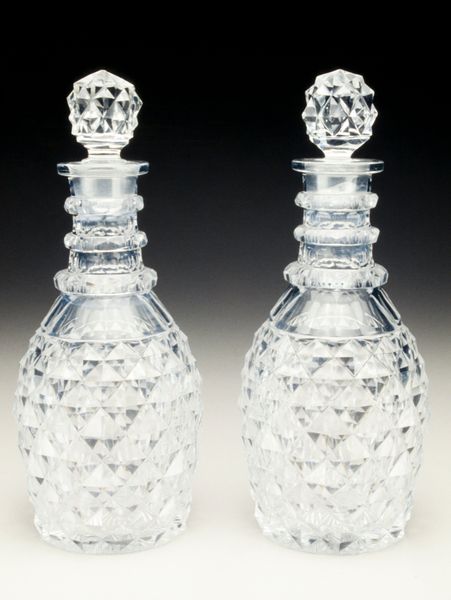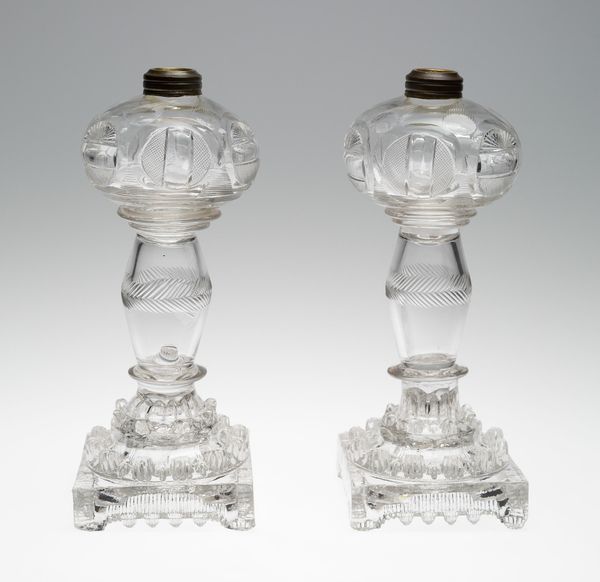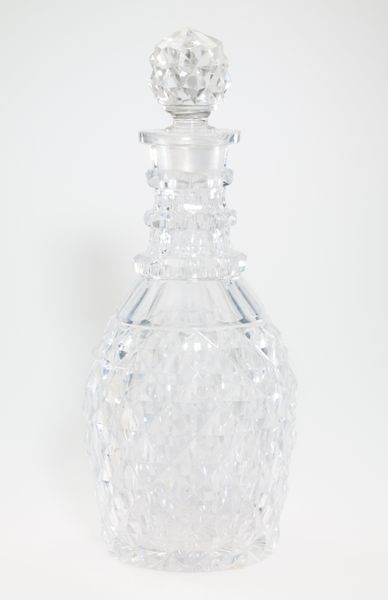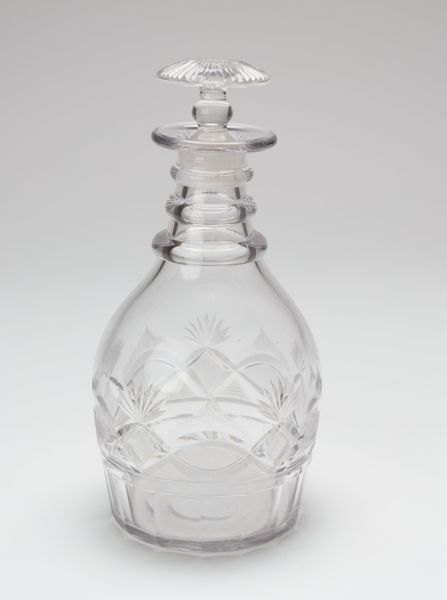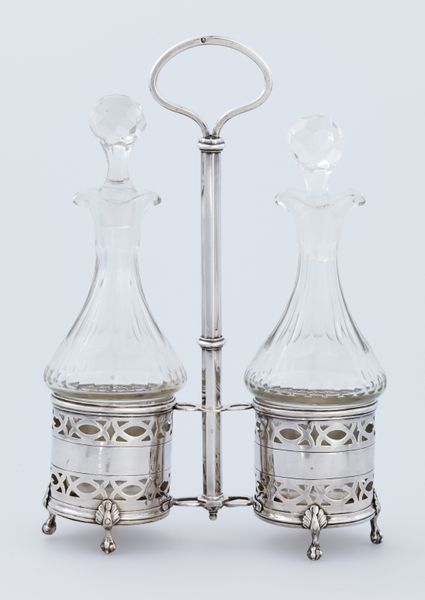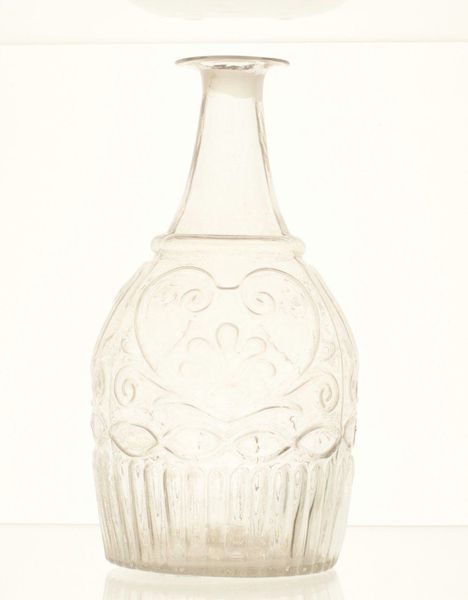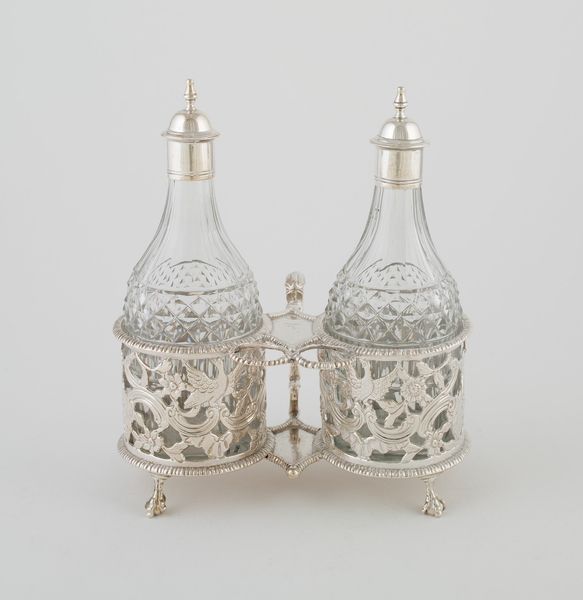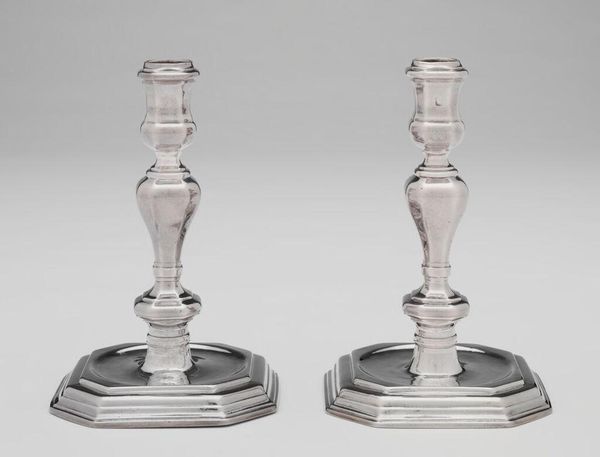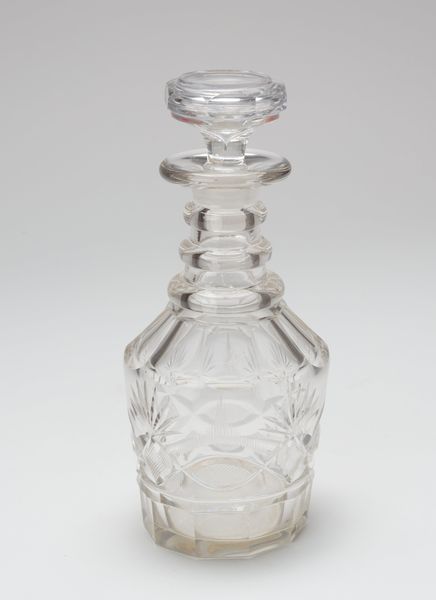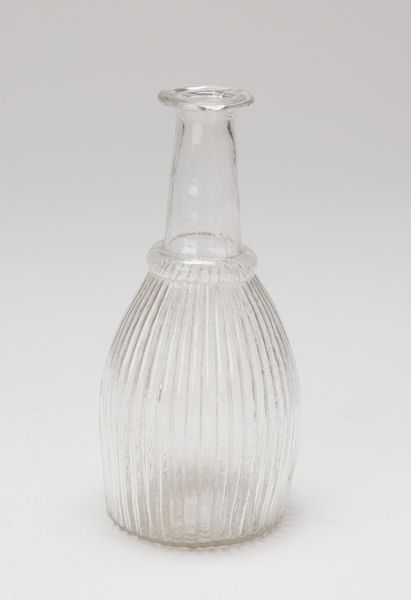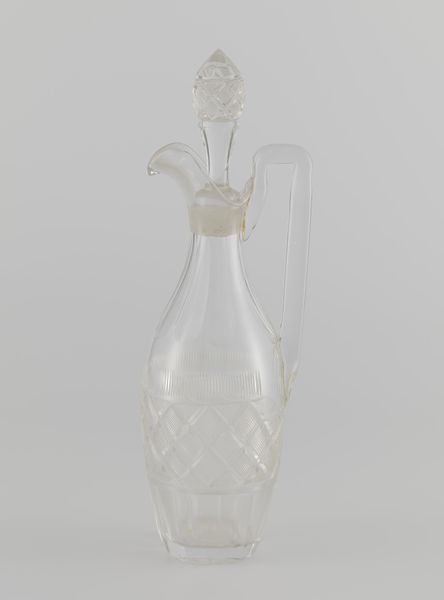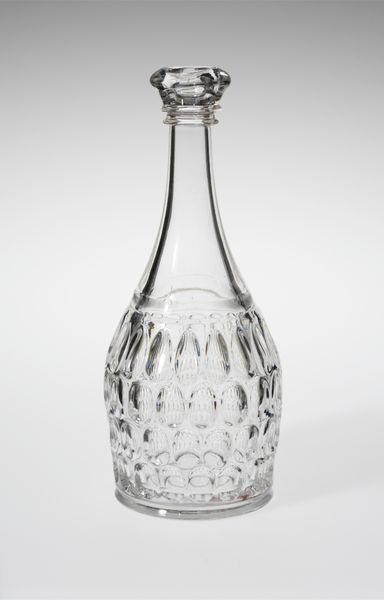
glass
#
glass
#
ceramic
Copyright: Public Domain
Curator: I’m drawn to the simple elegance of these decanters, both works created from glass around 1825 to 1845, now residing at the Minneapolis Institute of Art. There’s an appealing symmetry in their design, and the faceting creates interesting refractions. Editor: Immediately, I notice how the light plays through them. It's almost celebratory, like vessels for a gathering. It seems like a period piece and suggests wealth through the attention to design over utility. How were decanters understood in this specific time? Curator: Precisely, these decanters are reflective of the growing class structure of early 19th-century society and the way it mirrored its aesthetic values. Decanters such as these served both practical and symbolic functions in elite homes, where drinking spirits had strong ties to status and entertainment. Their intricate glasswork was considered fashionable to demonstrate social standing and wealth during a social event, hence this design choice. Editor: It's fascinating to consider the social politics embedded in an object meant for, quite literally, pouring drinks. Given that these objects were accessible only to a small subset of the population, how do we reckon with their display within institutions dedicated to democratizing culture? And in which way could it become a critical access point for questioning inequalities related to historical structures? Curator: The inclusion of the "Decanter" provides valuable insight to museum visitors about an unequal period, therefore, presenting it with full historical context offers us tools to explore such disparities in wealth, and production, for example the class dynamics between the people who use these objects, and the unknown person or people that created them. I believe museums are places that hold and communicate complex histories through art and other objects that facilitate dialogue, while teaching. Editor: Yes. Perhaps the very transparency of the glass—allowing us to see through it, literally—mirrors the need for transparency in understanding the socio-economic disparities of that era. On that point, I found my reflection more profoundly today. Curator: That is indeed an interesting idea. This "Decanter" allows visitors to literally and metaphorically examine past cultural consumption practices as they intersect with society’s power dynamics. Editor: Food for thought, or perhaps, drink for thought. Thank you. Curator: Thank you for such insights.
Comments
No comments
Be the first to comment and join the conversation on the ultimate creative platform.
